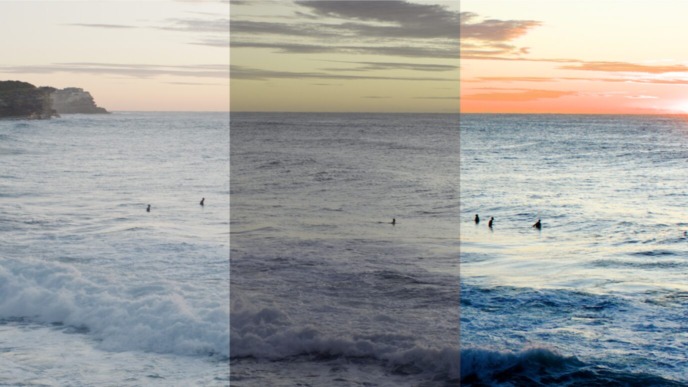
Pomfort ShotHub closes the gap to establish a seamless cloud based look workflow between the point of look creation and creating dailies with the intended look from original camera negatives.
Looks created with Livegrade during the shooting process of a scene can be made available in a cloud project and then be fetched by Silverstack Lab directly for creating proxy clips with the right look. This enhances the existing file based look matching process, making it more seamless to receive look metadata and to associate it automatically with the clips from the camera card based on metadata.
In the following we take a closer look at four of the benefits of a cloud based look workflow, to learn more why using Silverstack Lab to create dailies helps with your duties in a highly integrated environment with Livegrade and ShotHub:
The 4 Benefits
- No More Working With Single Look Files
- Instant Availability of Looks
- Transmit the Identical Grading Node Structure and Refine from There
- Access Looks Anytime from Anywhere
1. No More Working With Single Look Files
Make your Look Workflow Less Error Prone by Saving Steps
Each manual step that has to be performed has potential for mistakes. In a fast paced set environment files can be confused quickly.
Transmitting looks via ShotHub allows for more automation and therefore reduces the risk of errors. As it also reduces the need for communication, it creates more transparency.
Previously a look archive (PFLA) file had to be manually exported from Livegrade and imported into Silverstack Lab. This at least requires a transparent naming convention and a coordinated way to store and transmit the look files.
Compared to working with a CDL and LUT workflow, where many CDL files and/or also potentially many LUT files are transmitted to the point of dailies creation the cloud based look workflow is even more beneficial: In most cases transmitting CDLs and LUTs requires a lot of manual work as well as communication and creates even more space for errors.

2. Instant Availability of Looks
Gain Speed Transmitting Looks
By connecting your Livegrade project to ShotHub you make the look metadata instantly available to be fetched by Silverstack for look matching.
Like this you can be sure that the look information is already available once the camera card arrives. You can instantly match the looks to clips and already benefit from the intended look on the clips in preceding steps like a QC run through the clips.

3. Transmit the Identical Grading Node Structure and Refine from There
More Accuracy by Simplifying Look Exchange
As Livegrade and Silverstack Lab share the same grading module, all nodes and settings are transmitted one-by-one.
After look matching you can take off with a familiar user interface to edit matched looks and refine them if necessary. However you can always return to the original matched look.
Both Livegrade and Silverstack Lab allow to export grading information in common formats for exchange with 3rd party applications, however you can vastly benefit from a coordinated ecosystem that simplifies look exchange and makes sure that the right transforms are applied in the right order.

4. Access Looks Anytime from Anywhere
Support Remote Workflows if Necessary
If you are required to extend the set and continue work in remote locations, a cloud based look workflow supports you with that in a simplifying way. You can access look information easily anytime from anywhere and receive looks from set directly in Silverstack Lab.
If you need to render proxy clips in a van or the hotel room over night a cloud based look workflow simplifies the receipt of looks directly from the cloud at any time. Don’t ever worry again about look files in some directory on a physical drive which you have to take care of.




